
-
Find the right food for your petTake this quiz to see which food may be the best for your furry friend.Find the right food for your petTake this quiz to see which food may be the best for your furry friend.Featured products
 Perfect Digestion Large Breed Puppy Food
Perfect Digestion Large Breed Puppy FoodPrecisely balanced nutrition with Hill's ActivBiome+ prebiotic blend actively contributes to supporting digestive health and overall well-being to help your pet feel their best
Shop Now Small & Mini Mature Adult 7+ Dog Food
Small & Mini Mature Adult 7+ Dog FoodHill's Science Plan Small & Mini Breed Mature Adult Dog Food with Chicken is a complete pet food, specially formulated with ActivBiome+ Multi-Benefit Technology.
Tailored nutrition to support graceful ageing in small dogs. Specially made with a synergistic blend of nutrients for energy & vigor.Shop Now Perfect Digestion Small & Mini Adult Dog Food
Perfect Digestion Small & Mini Adult Dog FoodHill's Science Plan Perfect Digestion Small & Mini Breed Adult Dog Food with Chicken & Brown Rice supports ultimate digestive well-being & a healthy microbiome.
Shop NowFeatured products Kitten Food
Kitten FoodTender chicken chunks in gravy for kittens, with omega-3s for healthy eye & brain development and high-quality protein to support muscle growth. With balanced minerals to promote strong bones & teeth.
Shop Now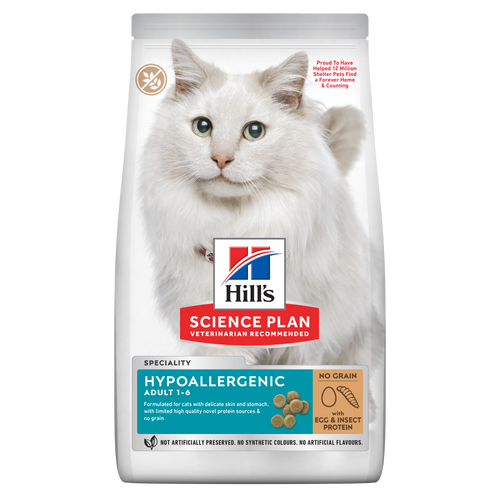 Hypoallergenic Dry Cat Food
Hypoallergenic Dry Cat FoodHILL'S SCIENCE PLAN Hypoallergenic Adult cat food with egg & insect protein is a complete pet food for adult cat 1–6 years old. It's formulated for cats with delicate skin and stomach, with limited high quality novel protein sources & no grain.
Shop Now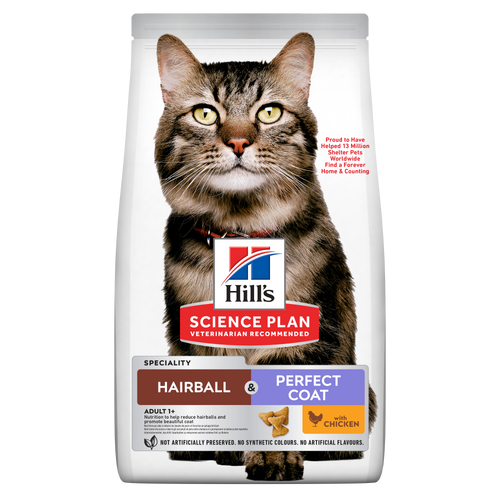 Hairball & Perfect Coat Adult Cat Food
Hairball & Perfect Coat Adult Cat FoodHill's Science Plan HAIRBALL & PERFECT COAT Adult cat food with Chicken is specially formulated to effectively help avoid hairball formation in adult cats while promoting a beautiful coat. Thanks to its mix of essential Omega-6 fatty acids, this food benefits the cat's skin and fur keeping them healthy and shiny. Our Advanced Fibre Technology helps reduce hairballs by naturally promoting their passage through the gut. This food is formulated with high-quality protein for a perfectly balanced, great-tasting recipe.
Shop Now -
Dog
- Dog Tips & Articles
-
Health Category
- Weight
- Food & Environmental Sensitivities
- Urinary
- Digestive
- Joint
- Kidney
-
Life Stage
- Puppy Nutrition
- Adult Nutrition
- Senior Nutrition
Cat- Cat Tips & Articles
-
Health Category
- Weight
- Skin & Food Sensitivities
- Urinary
- Digestive
- Kidney
-
Life Stage
- Kitten Nutrition
- Adult Nutrition
Featured articles Pet Food Storage Tips
Pet Food Storage TipsWhere you store your cat and dog food can make a big difference in the quality and freshness once it is opened. Here are some common questions and recommendations for optimal storage for all of Hill’s dry and canned cat and dog food.
Read More The Right Diet For Your Pet
The Right Diet For Your PetLearn what to look for in healthy pet food & nutrition, including ingredients, quality of the manufacturer, your pet's age, and any special needs they have
Read More Understanding Your Pet's Microbiome
Understanding Your Pet's MicrobiomeLearn what a pet's microbiome is, how it contributes to your pet's gut & overall health, and why nutrition is important in maintaining healthy microbiomes.
Read More -


If you have ever seen your cat peeing blood, you know just how alarming it can be. While it isn't something one ever hopes to witness, blood in cat urine is actually quite common. Hematuria, the scientific name for having blood in the urine, can be caused by abnormalities in the urinary tract or even disease processes elsewhere in the body that can affect the urinary tract or kidneys.
Blood in Cat Urine: Signs to Look For
While hematuria may be as obvious as blood or blood clots in the urine, it may not always be so visible. Most instances of hematuria are actually diagnosed at the microscopic level on what appears to be normal-colored urine; in these cases, there's only a small amount of blood. Hematuria may cause urine to turn pink or red.
According to the American Veterinary Medical Association, some of the other signs you may see along with a change in the urine's color include:
- Increased drinking
- Increased urination
- Straining to urinate
- Vocalizing when in the litter box
- Going in and out of the litter box repeatedly
- Urinary accidents outside of the litter box
- Inability to urinate altogether (a medical emergency)
- Bruising on the skin in the form of obvious bruises or small dots
- Bleeding from abnormal locations, such as the nose, gums, eyes, ears or rectum, and bloody vomit or feces
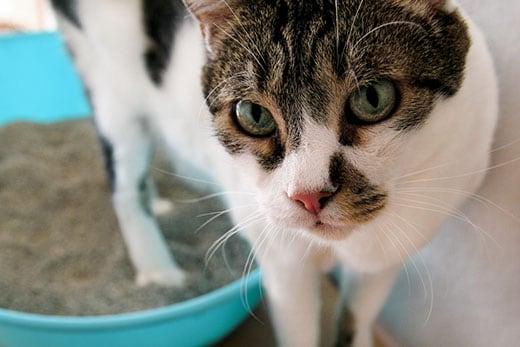
Causes of Blood in Urine
If reading these signs has sent you into a panic, take a deep breath. Some of these signs are not typically associated with blood in cat urine and are seen only with rare diseases. Most cases of hematuria in cats are the result of urinary illness and your veterinarian is the best person to help identify what and where exactly that source of illness is.
Your vet will start by taking a medical history of your cat and a physical exam. Some basic lab work for a cat peeing blood may include blood tests, such as a serum biochemistry panel and complete blood count (CBC), as well as an analysis of the urine. Depending on the potential underlying disease, your vet may recommend more specific lab tests, such as a panel to check for abnormalities in blood clotting. If your vet suspects a urinary tract infection, a urine culture test can help identify the specific bacteria that may be present. Abdominal X-rays or an abdominal ultrasound are often recommended to help identify urinary tract stones, tumors or other abnormalities that can cause a cat to pee blood, such as an inflamed bladder.
Most cases of hematuria in cats are due to FIC (feline idiopathic cystitis). Urinary tract infections are actually pretty rare among cats.


Tasty Tips
Cat Peeing Blood: Treatment
As with many diseases, treatment for blood in the urine varies depending on the exact cause. For example, kidney or bladder stones may sound like a complete diagnosis, but your vet needs to know what type of stones they're dealing with. Certain stones can be treated noninvasively with a therapeutic food that is capable of dissolving stones entirely. Some stone compositions are resistant to dissolution and will require surgery. Knowing as much as possible about the illness is critical to solving the problem.
Preventing Common Urinary Problems in Cats
You may have heard of a cat parent who struggled with their cat urinating inappropriately or perhaps you're a bit more acquainted with this yourself than you would like. Sometimes called feline lower urinary tract disease (FLUTD), this refers to a spectrum of different diseases that result in inappropriate urination from our feline roommates, explained the Cornell Feline Health Center. No one fully understands why these conditions develop or how to always successfully treat them. Here are two broad categories you can experiment with to prevent your cat from developing feline lower urinary tract signs (LUTS).
- Environment and stimulation: While you may think your house cat lives a cushy life, cats with lower urinary tract signs may disagree. Cats with FLUTD are prone to stress and are a bit higher maintenance than most cats. Giving the cat choices in terms of where to play, rest, eat and urinate can help to minimise stress. For example, each cat should have access to a private rest area, scratching posts and toys. Cats prone to stress often enjoy high perches to keep watch of their surroundings. Ideally provide one litter box for each cat, plus one extra. Cleaning the litter box daily is important for many cats with LUTS (and all cats, for that matter) because they may not want to use a dirty litter box, and therefore may find a cleaner (less optimal) place to do their business.
- Proper nutrition and hydration: The most important ways to help prevent lower urinary tract signs are proper nutrition and adequate water intake. Feeding wet foods is the number one way to improve overall water intake. Circulating water fountains may also be an option to encourage cats to drink more water to increase their water intake. The goal is to keep your cat well-hydrated so the urine is less concentrated and less prone to form crystals, which are the building blocks of stones.
Ensuring your cat eats a well-balanced food that's tested for its varying life stage (not simply "all" life stages) is very important. Some foods may have high levels of minerals that may contribute to the development of crystals and stones, which may contribute to lower urinary tract disease.
While cats with LUTS are common, if you ever notice a cat peeing blood, never make assumptions. Always seek veterinary care first to rule out treatable diseases, and remember that the inability to urinate is a life-threatening medical emergency.


Dr. Laci Schaible is a small animal veterinarian, veterinary journalist, and a thought leader in the industry. She received her Doctor of Veterinary Medicine from Texas A&M University and her Masters in Legal Studies from Wake Forest University.
Related products

Tender chicken chunks in gravy for kittens, with omega-3s for healthy eye & brain development and high-quality protein to support muscle growth. With balanced minerals to promote strong bones & teeth.

HILL'S SCIENCE PLAN Hypoallergenic Adult cat food with egg & insect protein is a complete pet food for adult cat 1–6 years old. It's formulated for cats with delicate skin and stomach, with limited high quality novel protein sources & no grain.
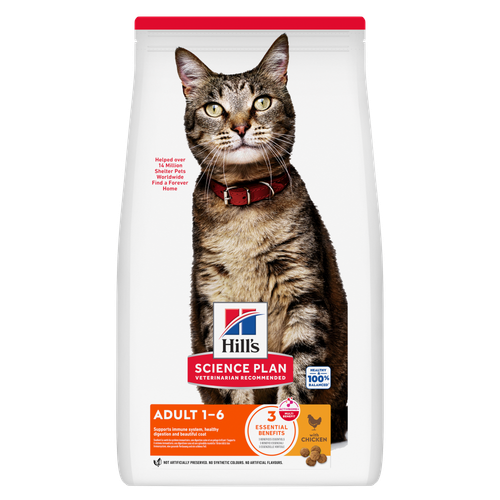
Hill's Science Plan Adult Cat Food with Chicken is a complete pet food, specially formulated with ActivBiome+ Multi-Benefit Technology.
This food is specially formulated to fuel the energy needs of cats during the prime of their life.

Hill's Science Plan HAIRBALL & PERFECT COAT Adult cat food with Chicken is specially formulated to effectively help avoid hairball formation in adult cats while promoting a beautiful coat. Thanks to its mix of essential Omega-6 fatty acids, this food benefits the cat's skin and fur keeping them healthy and shiny. Our Advanced Fibre Technology helps reduce hairballs by naturally promoting their passage through the gut. This food is formulated with high-quality protein for a perfectly balanced, great-tasting recipe.
Related articles

When learning how to train your cat, you'll start with very basic first steps that both reward good behavior and discourage the bad.
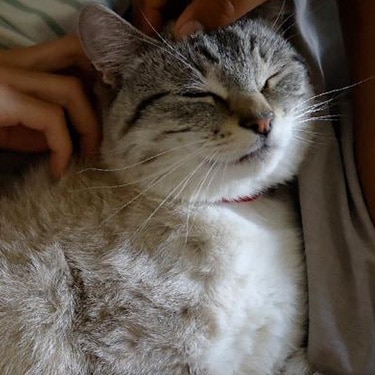
Find out about how you can support your cat's digestion to boost overall health. Diet is key to a long and happy life for your cat, so discover what you can do.
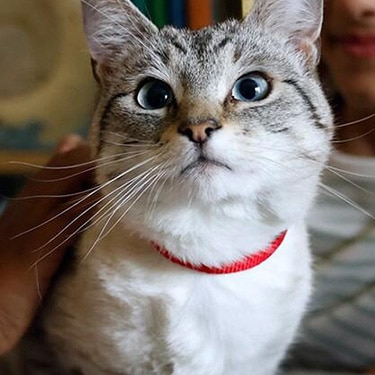
Discover what you can do to spot and support a sensitive cat stomach. See what routines and food you can implement to help your cat be happy and healthy.

Discover which cat toys games your feline friend might like, and how they are great sources of exercise. Explore our library of articles to learn more.

Put your cat on a diet without them knowing
Our low calorie formula helps you control your cat's weight. It's packed with high-quality protein for building lean muscles, and made with purposeful ingredients for a flavorful, nutritious meal. Clinically proven antioxidants, Vitamin C+E, help promote a healthy immune system.
Put your cat on a diet without them knowing
Our low calorie formula helps you control your cat's weight. It's packed with high-quality protein for building lean muscles, and made with purposeful ingredients for a flavorful, nutritious meal. Clinically proven antioxidants, Vitamin C+E, help promote a healthy immune system.

